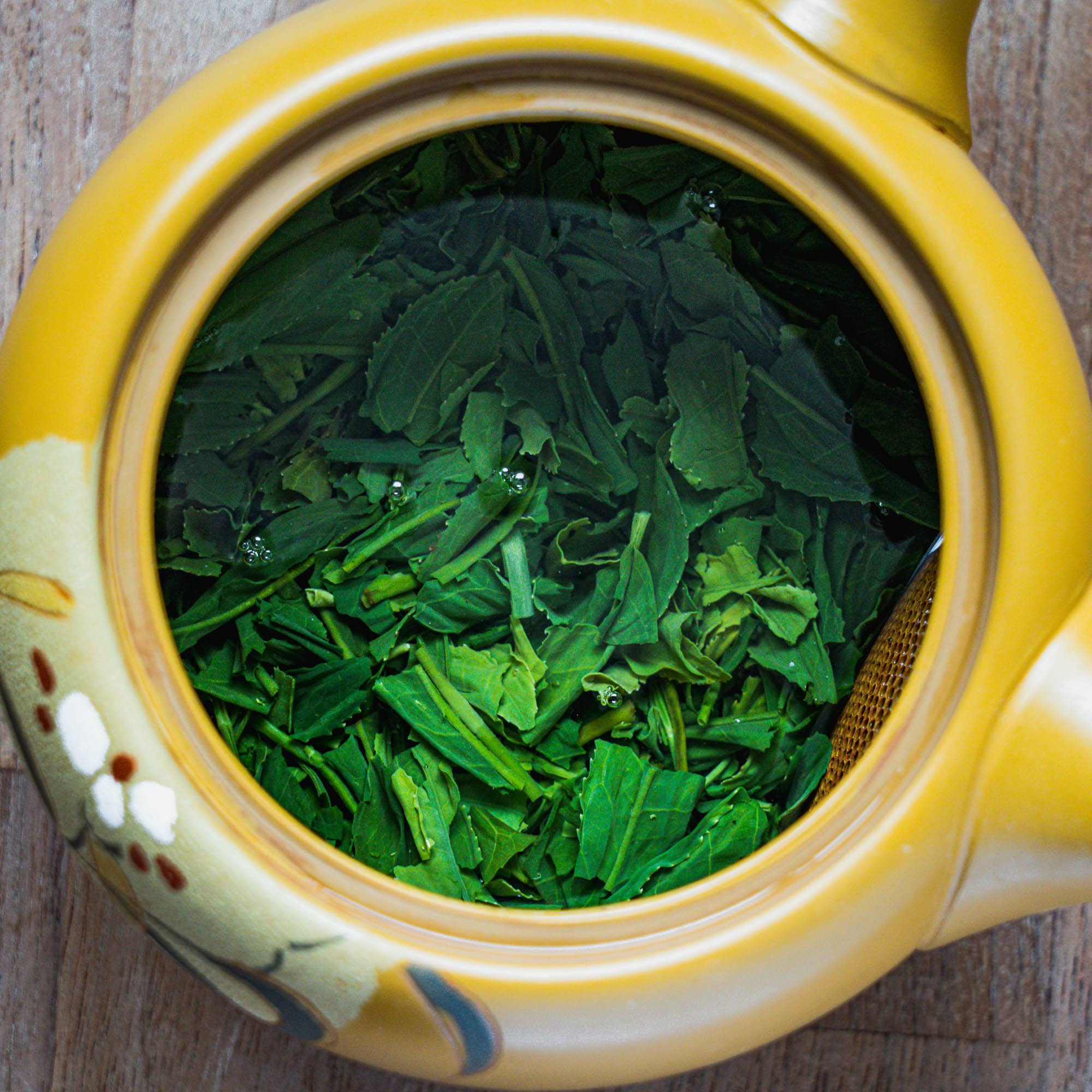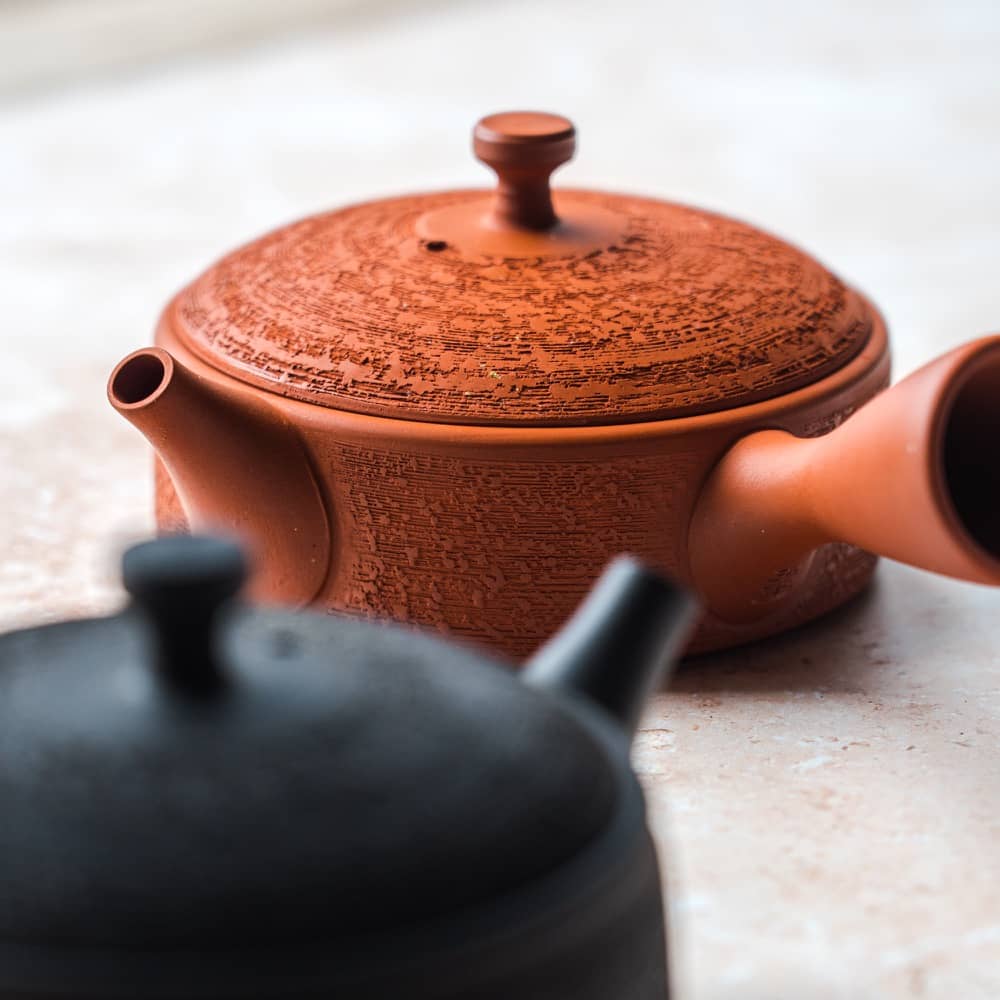Japanese Black Tea: History and Revival

While you may not have heard of Japanese black tea, or wakoucha, it once accounted for around 60% of all Japanese tea exports. Now, it is undergoing a resurgence, but with an emphasis on quality rather than quantity.
In Japanese, black tea is called koucha (紅茶 - lit. red tea) with black tea produced in Japan referred to as kokusan koucha (国産紅茶 - domestic black tea), jikoucha (地紅茶 - local black tea), or since the mid 2000s, wakoucha ( 和紅茶 - Japanese black tea).
What is black tea?
Black tea, also known as red tea throughout East Asia, is generally defined as ‘fully oxidised’ (learn more about oxidation and tea types in our guide). Technically speaking however, most if not all black teas fall short of being 100% oxidised. Instead, they are more properly defined as teas that do not undergo a ‘fixing’ or ‘kill green’ process that stops oxidation, and are thus allowed to oxidise significantly during withering and rolling before being shaped and dried.
Black tea was first developed in China sometime during the 17th century, and while it gained some popularity there, it found its true success in the west, where it eventually became the favoured style of tea. Today, black tea production can be roughly split into Chinese and British Imperial/Indian styles of production:
- Chinese black teas are usually made from hand-picked first flush leaves, and are more delicate and complex in flavour, with many well-known regional styles. The more delicate and aromatic nature of these teas partly stems from the fact that the tea plants grown in most of China are the small-leaved Camellia Sinensis var. sinensis subspecies, which is the same subspecies that most Japanese cultivars belong to.
- Indian black teas were originally developed by the British in order to compete with Chinese teas for the western market. Apart from those from Darjeeling, Indian teas are typically made from second flush pickings of the native Camellia Sinensis var. assamica tea subspecies. Commonly known as Assamica in contrast to the Chinese Sinensis, this subspecies grows better in the Indian climate and produces a darker, more tannic, astringent, full-bodied tea that better suits the western palette and practice of adding milk and sugar. The British heavily industrialised and standardised their tea production process, prioritising yield and consistency over diversity and complexity. This more industrialised approach involves heavy mechanical rolling and artificially accelerated oxidation, which when compared to the light hand-rolling and gentle oxidation of most Chinese black teas, yields an even brisker tea.
Early History of Black Tea in Japan
While black tea was first brought to Japan in the 1600s, it wouldn’t be until the late 1800s that Japanese tea farmers would begin producing their own. Only 10 years after Japan started exporting tea in 1858, green tea, chiefly sencha, became one of the most important export commodities, with roughly 80% of tea produced in Japan destined for export. Despite this remarkable success, especially in the American market, diplomats Toshimichi Okubo (大久保利通) and Tomomi Iwakura (岩倉具視) noticed that black tea reigned supreme over green tea in most western countries apart and was increasingly popular in the US. In an effort to tap into this growing black tea market, dominated by China and later British India, Japan recruited the help of two Chinese black tea specialists to teach tea farmers in Kumamoto and Oita prefectures how to grow and process Chinese-style black tea, introducing the Black Tea Process Record (紅茶製法書). While this did result in the first ever Japanese black teas, produced in 1875, they did little to impress foreign merchants.
Following this disappointment, Tada Motokichi (多田元吉), a tea farmer and former bakushin of the Tokugawa Shogunate, was sent to China to learn the secrets and techniques of black tea production and to bring back seeds from famed black tea producing regions. Later he was sent to India and Ceylon to learn about their cultivation methods and heavily industrialised processing and also to bring back Assamica seeds. While Assamica flourishes in the warm climates of India in Sri Lanka, it struggles in Japan, and so it was cross-bred with Japanese Sinensis bushes in order to produce tea plants that could withstand Japanese winters and still produce bold black teas.

After some trials in Shizuoka, Mie, Aichi, Shiga, and Kyoto prefectures, these new plants and production methods were brought to Kochi prefecture in 1877, where the tea produced received praise abroad. Emboldened by this success, Motokichi was instructed to spread these techniques around Japan, the following year, through the Black Tea Manufacturing Training Regulation (紅茶製造伝習規制), based of Indian production methods. In addition to streamlining black tea production, the industrialisation methods brought from India inspired the modernisation and mechanisation of sencha processing as well.
The Rise and Fall of Japanese Black Tea
As the West increasingly preferred Indian style black teas and with this style being easier to produce industrially, the Indian method quickly became the standard in Japan, making use of the generally unwanted second flush leaves. While spring-picked first flush leaves (一番茶- ichibancha) are prized for green teas, summer-picked second flush leaves (二番茶 - nibancha) yield low quality green tea (bancha) of lesser value. Due to the increased sunlight in the summer, second flush tea leaves produce more bitter tasting catechins, which can be undesirable in green teas. However, when oxidised, these catechins become the polyphenols or ‘tannins’ that give black teas their dark colour and bold and brisk flavour. Compared to the more delicate black teas made from first flush leaves, these second flush black teas were ideal for export to western buyers. Soon, the common practice was for farms to produce sencha for domestic consumption from their first flush harvest, and black tea for export from their second harvest.
Export of these black teas fluctuated through the following decades: rising when India and Sri Lanka experienced economic crises, and falling as Japan fought through multiple wars, including WWII. After the war, Japanese black tea experienced its heyday, eventually peaking in 1954 when over 8,000 tons were produced, around 5,000 of which was exported. In fact, that same year, the first ever Japanese tea cultivar was registered: Benihomare, which was developed as a Sinensis/Assamica hybrid explicitly for black tea production. However, as the postwar Japanese economy grew, prices rose and quality could not rise to match them, and so Japanese black tea lost its competitiveness in both the global and domestic markets. For a while, the industry was artificially supported by a law which required those who imported foreign black tea into Japan to purchase an equal quantity of domestic black tea. This rule ended in 1971, and with it so did the bulk of Japanese black tea production.
The Revival

Though production of black tea dwindled, research into new black tea cultivars continued, with the development of Benifuuki in 1993 ushering in a new age of Japanese black tea. A few Japanese tea farmers returned to producing black tea, this time with a different approach: pursuing quality and originality over yield and profits. This new age prompted a ‘rebrand’ and the name ‘wakoucha’ first appeared in 2002. Rather than just using lower quality second flush leaves, more and more farmers have been employing more Chinese-inspired styles of black tea production, and dedicating their prized first flush leaves to black tea production. The old method of simply using the second flushes of bushes cultivated for sencha resulted in suboptimal black tea, as the fertilisation and cultivation practices that produce good sencha are not ideal for black tea.
In the past 20 years, wakoucha has seen a rise in quality, popularity, and variety. Unlike sencha, there is no standardised production model, so modern wakoucha encompasses a wide spectrum of tastes and styles, from the delicate and fruity teas meant to be enjoyed gong fu style, to the bold and brisk for taking with milk and sugar. Some are made from cultivars with Assamica heritage, such as Benifuki, Benihikari, and Izumi, producing a bolder taste, whereas some are made from purely Sinensis cultivars, such as Yabukita, Koushun, or even Gokou, having a more delicate taste. As producers continue to experiment and refine their techniques, we are entering a golden age of wakoucha.

Loose Leaf











